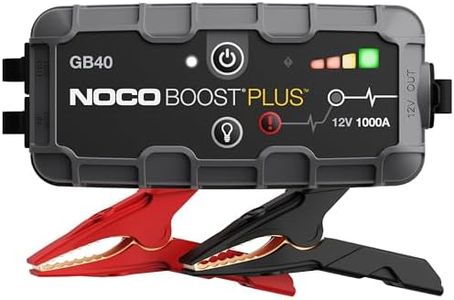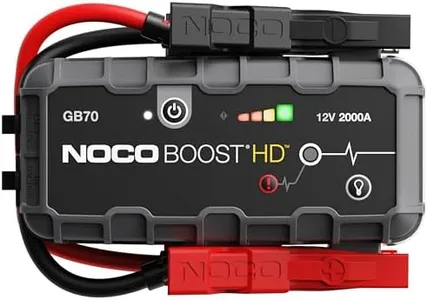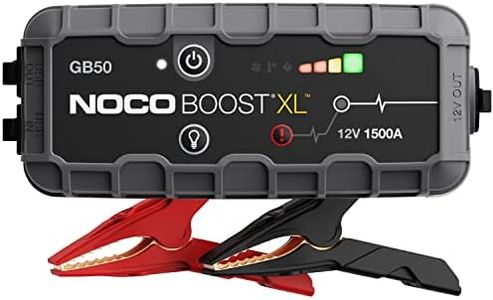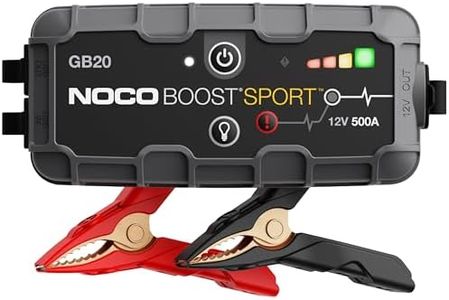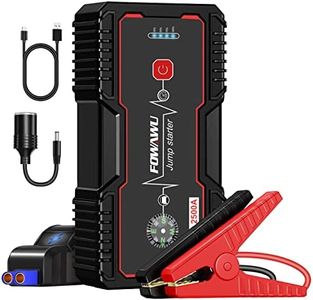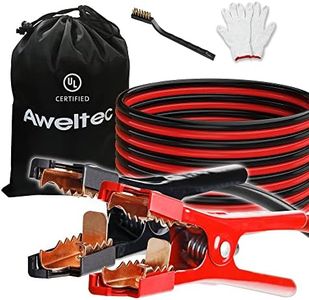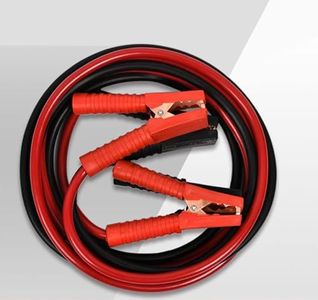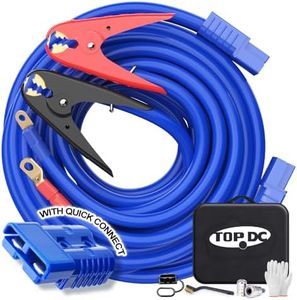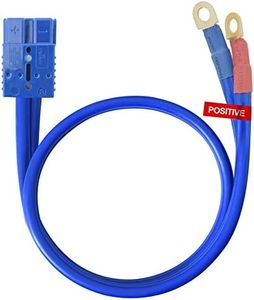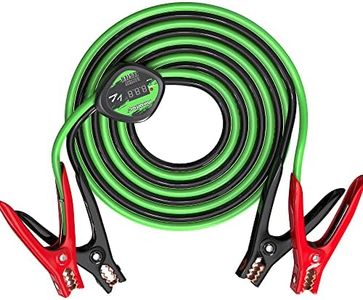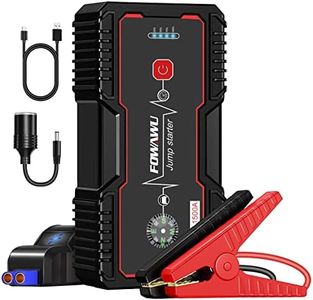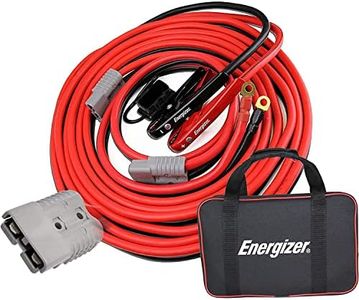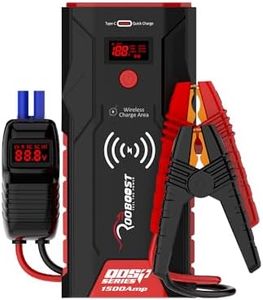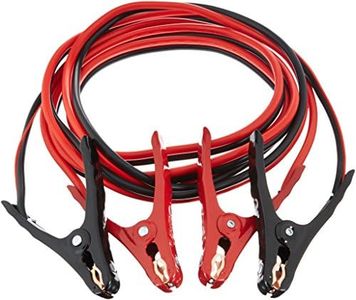We Use CookiesWe use cookies to enhance the security, performance,
functionality and for analytical and promotional activities. By continuing to browse this site you
are agreeing to our privacy policy
10 Best Jumper Cables
From leading brands and best sellers available on the web.Buying Guide for the Best Jumper Cables
Choosing the right jumper cables is essential for anyone who drives a car, as dead batteries can happen when you least expect them. Jumper cables help you jump-start your vehicle by connecting it to another battery. When buying jumper cables, think about the kinds of vehicles you might need to help (or get help from), how often you might use them, and how easy they are to store and use. Understanding a few key features will ensure you get cables that will work safely and efficiently when you need them.Cable Gauge (Thickness)The cable gauge refers to the thickness of the wires inside the jumper cables. This is important because thicker wires (lower gauge numbers) can carry more electricity, which is necessary for starting larger engines. Generally, cable gauges run from 10 (thinner, less power) to 1 or 2 (thicker, more power). If you drive a small car and only expect to use the cables occasionally, a 6 or 8 gauge cable might be enough. For trucks, SUVs, or if you want to be prepared for a variety of vehicles, look for cables rated at 4 gauge or lower. Choosing the right gauge depends on the size of your vehicle's engine and the likelihood of needing to help larger vehicles.
Cable LengthCable length matters because it determines how easy it will be to connect two vehicles, especially if you can't get them bumper-to-bumper. Jumper cables commonly come in lengths from around 10 to 25 feet. Shorter cables are easier to store, but longer cables offer more flexibility in awkward parking situations. If you usually park in tight spots or garages, longer cables (like 16 to 20 feet) can make the process much easier. Pick a length that fits your usual driving and parking scenarios.
Clamp QualityThe clamps are the parts that attach to the battery terminals. Good quality clamps ensure a strong connection and are less likely to slip off during use. Clamps are usually made of metal and covered with insulating material for safety. Look for clamps that open wide enough for your vehicle’s battery terminals and have solid teeth for a secure grip. For regular use or larger vehicles, stronger, more robust clamps are best, while lighter-duty clamps may work if you just need something for rare emergencies.
Insulation/CoatingThe insulation is the thick protective coating around the wires. It is important because it prevents accidental shocks and damage to the cable, making it safer to handle, especially in cold or wet conditions. Higher quality cables have thicker, more flexible insulation that won't crack or stiffen in cold weather. If you live in cold climates or plan to keep the cables in your car year-round, look for cables with heavy-duty, flexible insulation.
Amperage RatingThe amperage rating tells you how much electrical current the cables can safely carry. This is important because different vehicles require different power to start their engines. Higher amperage cables can handle the demands of larger vehicles like trucks or SUVs, while lower amperage cables might only work for small cars. To pick the right amperage, consider the types of vehicles you drive or might need to help—higher is better for versatility and safety.
